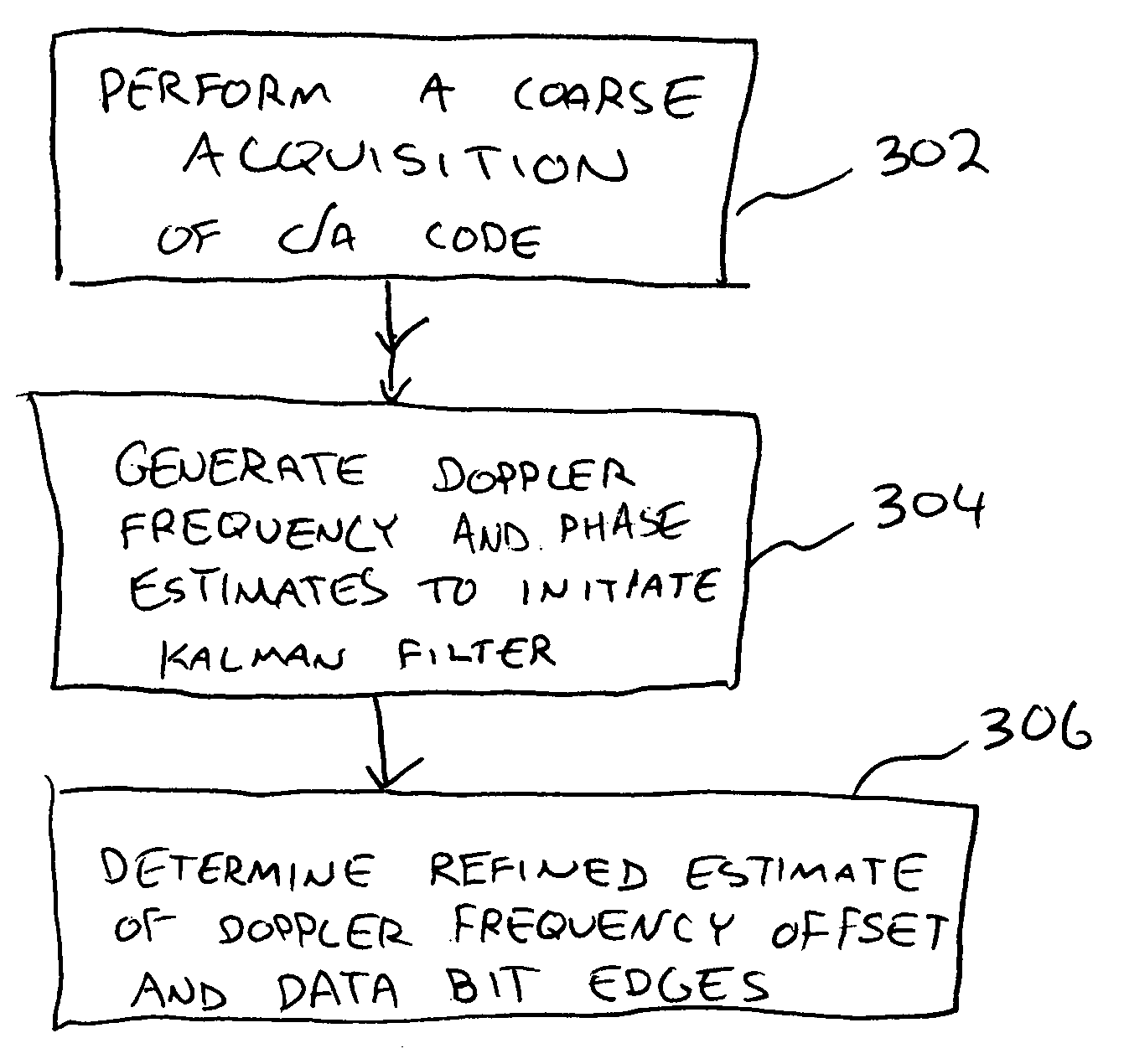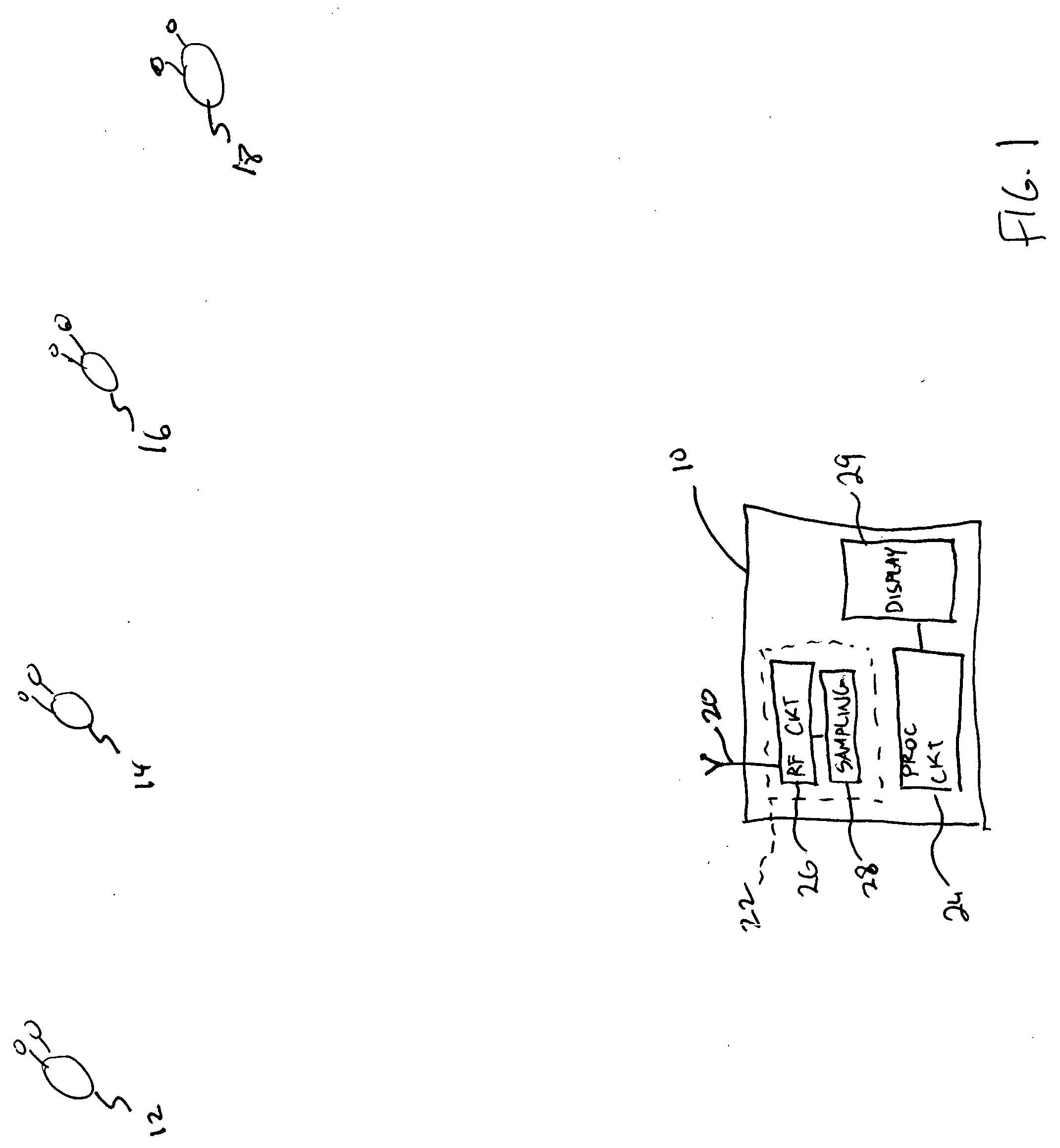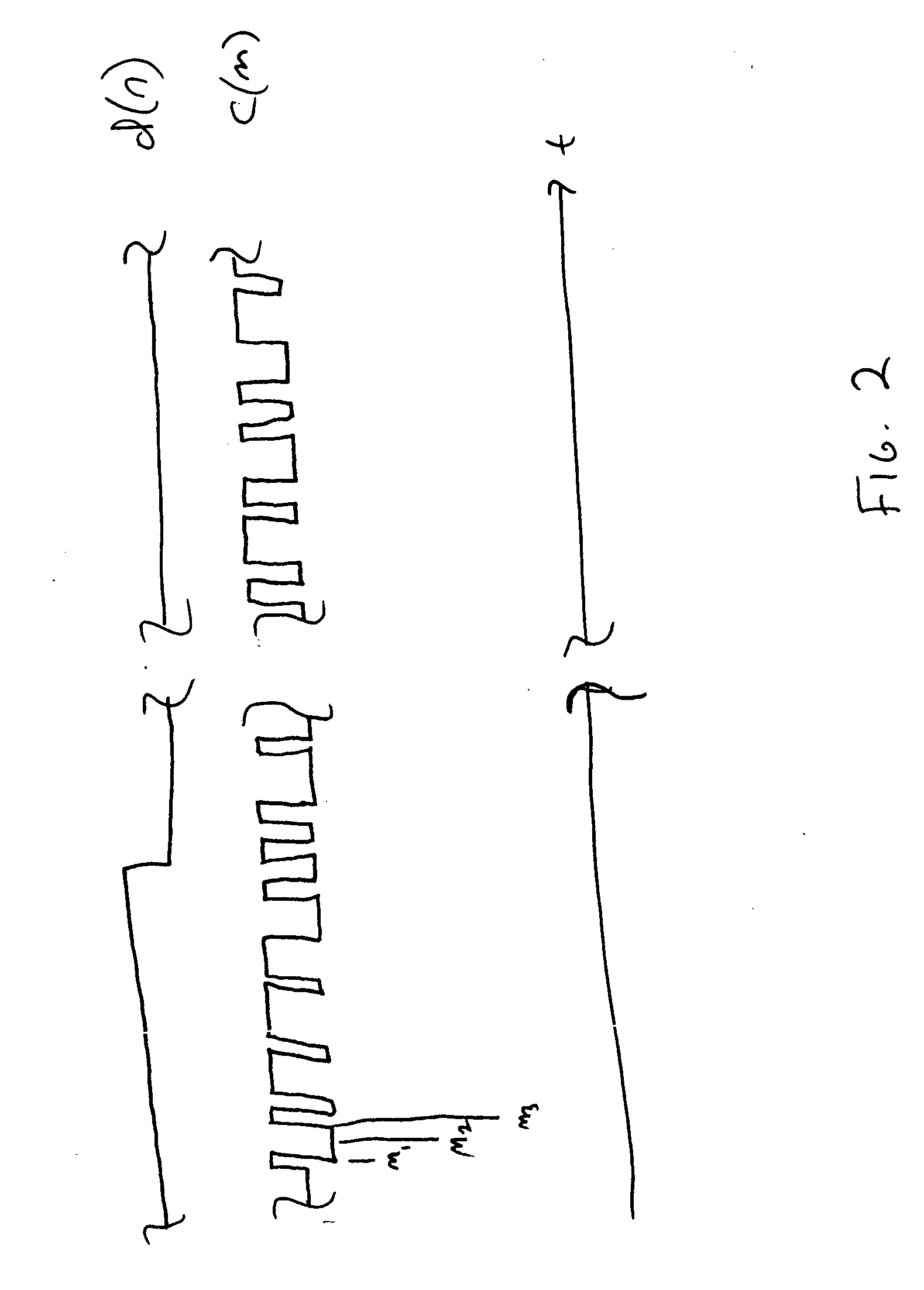Method and apparatus for detecting and processing GPS signals
a technology of gps signals and processing methods, applied in the field of gps signals, can solve the problems of difficult to obtain accurate delay measurements, difficult to acquire accurate delay measurements, and measured delay does not provide an absolute delay value, and achieves the effect of prolonging the integration of correlation values and weak signals
- Summary
- Abstract
- Description
- Claims
- Application Information
AI Technical Summary
Benefits of technology
Problems solved by technology
Method used
Image
Examples
Embodiment Construction
[0022]FIG. 1 shows a block diagram of an apparatus 10 for receiving and processing GPS signals, in an environment in which the apparatus 10 receives RF GPS signals from four satellites 12, 14, 16 and 18. The receiver 10 includes an antenna 20, an input circuit 22, a processing circuit 24, and preferably a display 29 operable to display location information generated by the processing circuit 24 as will be discussed below in further detail.
[0023] The input circuit 22 is operably connected to receive RF GPS signals detected by the antenna 20, and to convert the signals into digital IF signals. As is known in the art, GPS signals are transmitted on the known L1 carrier frequency 1575.42 MHz. In the embodiment described herein, the input circuit 22 includes an RF processing circuit 26 and a sampling unit 28. The RF processing unit 26 includes filtering, amplification and frequency conversion equipment known in the art, and is capable of generating an analog IF signal from the 1575.42 s...
PUM
 Login to View More
Login to View More Abstract
Description
Claims
Application Information
 Login to View More
Login to View More - R&D
- Intellectual Property
- Life Sciences
- Materials
- Tech Scout
- Unparalleled Data Quality
- Higher Quality Content
- 60% Fewer Hallucinations
Browse by: Latest US Patents, China's latest patents, Technical Efficacy Thesaurus, Application Domain, Technology Topic, Popular Technical Reports.
© 2025 PatSnap. All rights reserved.Legal|Privacy policy|Modern Slavery Act Transparency Statement|Sitemap|About US| Contact US: help@patsnap.com



